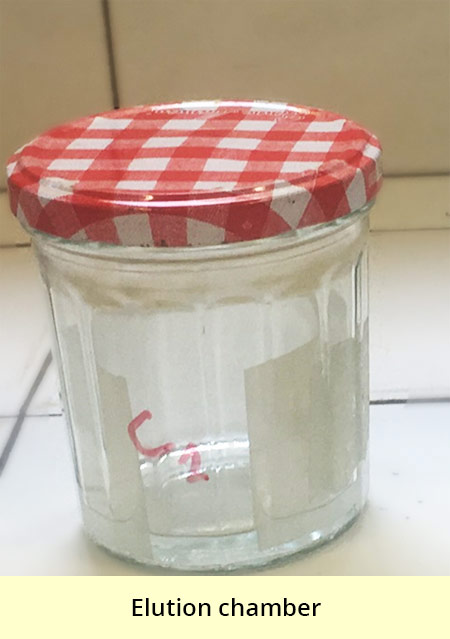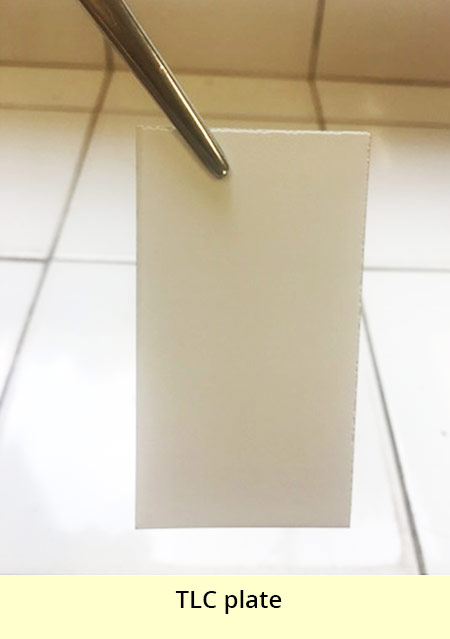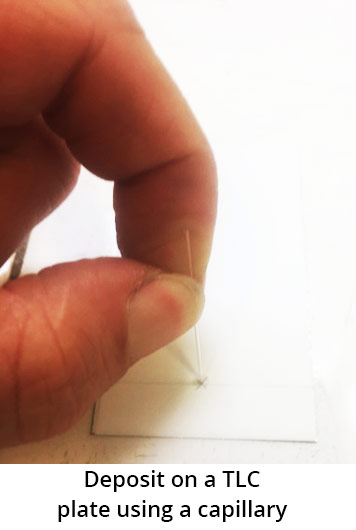Practical implementation
Chromatographic chamber preparation (saturation):
- Pour the eluent into the chamber (up to 0.5-1 cm)
- Put a filter paper soaked in eluent inside the chamber so that it lines the chamber wall (in order to saturate the atmosphere of the chamber with eluent vapor).
- Close the container and give the chamber time to become saturated with eluent.
Plate preparation:
- Cut a plate 3-4 cm wide and 7-8 cm high (the dimensions depend of course on the number of deposits, the size of the chamber and the number of spots)
- Cut the bottom corners in curves (in order to avoid edge-effects during the capillary move up).
- Draw a thin line with a pencil 1 cm away from the upper edge
Depositing the sample on the plate:
The sample deposited must be a solution: ideally, the sample to be analyzed should be dissolved in the chosen eluent – a spatula tip (if it’s a solid), a drop (if it is a liquid) in a few drops of solvent (2 to 5% solution). Using a capillary apply a small amount of the solution (a few mL) (the diameter of the spot should be as small as possible – around 2 mm).
Development of a plate :
- Put the plate in the chamber vertically, facing the filter paper.The filter paper must not touch the plate!!
- CLOSE THE CONTAINER AND DO NOT MOVE IT AGAIN.
- When the solvent front is about 1 cm away from the upper edge of the plate, remove it and indicate this position.









